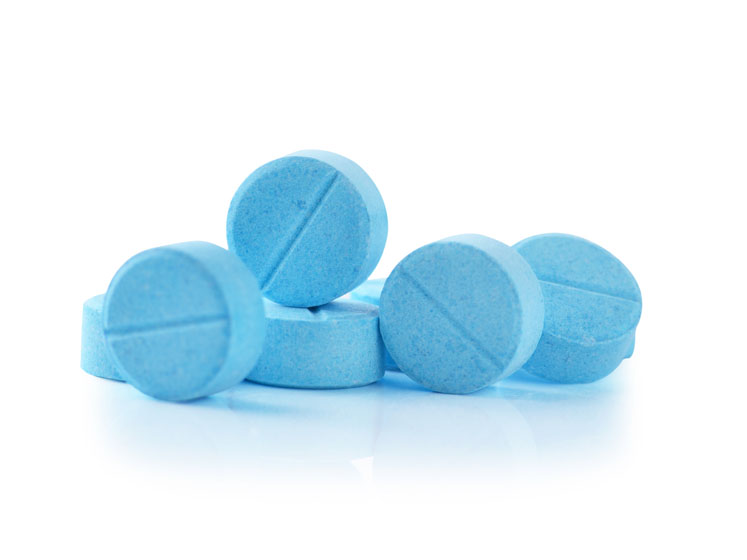The COVID-19 pandemic had an unexpected and traumatic impact on business supply chains; but, as many nations begin to learn to live with the virus, the aftermath seems to be just as severe and painful as all the initial lockdowns.
It’s like the pandemic took a spring and compressed it to its maximum; then, as the tremendous success of the COVID-19 vaccines allowed lockdowns to end, the spring has been explosively released, resulting in a tremendous surge in demand.
Whereas all supply chains are susceptible to the bullwhip effect, in which small changes in demand — usually at the consumer level — are then magnified throughout the supply chain until the primary suppliers see major swings in demand, this situation is like nothing we have experienced before.
The increased demand spurred manufacturing organisations to get back to work to stock depleted supply chains. This was the first aftershock and set everything in motion; now, we’re seeing the “return” of the initial expansion with a downturn in demand now coming as supply chains resaturate. This natural deceleration has been exacerbated by the surge in energy costs and the associated negative economic impact on demand.
It is important to remember that much of that previous stability was because the systems had come to a balance point and, as a result, were quite resilient to external influences.
Before COVID, there was a low-risk supply chain and inventory strategies such as Just-in-Time (JIT) could be implemented successfully, keeping low stock inventories, relying on suppliers to deliver on their promise dates. Indeed, that stability allowed for supply chains to extend globally almost without any difference in risk to supply.

The procurement of excipients is not exempt from these supply–demand economic forces, although the impacts are different depending on whether the excipient is manufactured exclusively for the pharmaceutical market or is it predominantly sold for other applications. In the latter cases, it’s possible that only a small proportion is sold to the pharmaceutical market.
When the excipient is manufactured exclusively for pharmaceutical use, there will be insulation from much of this turbulence (at least on the demand side) as people will still require medicines and put a priority on their safe supply. But, for non-dedicated excipients, they will be more vulnerable to general economic demand/fluctuations; as such, ongoing manufacturing availability may also be a contributing factor to an uncertain supply.
Nevertheless, the logistics of obtaining excipients in a timely manner and then having them delivered to the drug product manufacturer is the current challenge, regardless of the type of excipient. For the immediate short-term, we can expect further inaccuracies to abound in predicting when excipients will be delivered. The supply chain disruptions will continue and the current uncertainties will persist well into 2023.
To deal with the new now, successful organisations need to adapt to these circumstances and the immediate future. Continuing with purchasing and supply strategies that were fine before the pandemic are not going to be successful in the mid-term while the current disruptions continue. Hoping that matters will settle down soon and return to “normal” does not look to be a viable option.
New strategies that generate greater resilience will be required to buffer current oscillations and any subsequent shocks. This change will have to apply along the supply chain and excipient suppliers will also have to revisit their own supply chains and identify where the risks have changed. So too will pharmaceutical manufacturers.
To begin with, a careful analysis and a measured approach to the changed circumstances are required. Thus, revisiting supplier and excipient risk assessments is an excellent starting point. There have been many changes in the supply chain and the risks have altered.
What may have been a low risk in the past is now a high one, and what may have been a good mitigation technique is now ineffective.
A systematic and objective analysis will then allow for revised strategies and tactics to be identified and implemented. Any new control measures will also have to be evaluated to make sure that there are no adverse impacts elsewhere.
Combining procurement risk assessments with knowledge about a supplier is required to determine what level of GMP should be applied by the excipient manufacturer.1 These risk assessments should already contain some information about the excipient manufacturer and their location … and which supply chain risks have been identified (even if they were not relevant to the determination of the required GMP).

What is certain is that more information about sources of raw materials for the excipient as well as the excipient distribution process will be needed, so that the vulnerabilities in those supply chains can be included in the assessment. Such a structured approach will then highlight specific strategies and tactics to secure the supply chain for each excipient.
There are a few obvious options to build more resilience into the supply chain, such as establishing buffer stocks of the excipient. But as stock levels may already be low at this point of the pandemic, and demand high, it will be difficult to rebuild them to the required or even greater levels in the short-term.
This tactic may not be applicable to all excipients, particularly those with short shelf-lives. Another more attractive option is to shorten the supply chains with more local sourcing — even if these prove to be more expemsive to procure. The higher costs will be tolerable if there is more accuracy and certainty about the timeliness in receiving the excipients.
Good suppliers were always at a premium and provided value beyond a price charged for the excipient, so seeking new suppliers is another risk to manage as well. In this regard, the International Pharmaceutical Excipients Council (IPEC) has published an increasing number of guides and position papers during the past 10 years that have set achievable, pragmatic standards (which have also received good regulatory acceptance).
Several guides focus on effective communication between the excipient supplier and their customers. When both parties agree to use the format of these communications, supplier qualification can be accelerated with no loss of quality. Key IPEC guides here include the Excipient Information Packs (EIPs) and Quality Agreement templates.
In terms of manufacturing, the widespread acceptance of the IPEC-PQG GMP Guide and the EXCiPACT excipient GMP certification standard also allows for a speedier approval of new suppliers. In previous times, that approval process may have been stepwise with the “paperwork” having to be approved first before any technical evaluation of the excipient itself is completed.
Here, therefore, is an opportunity to accelerate that process; when a new supplier demonstrates compliance with IPEC-PQG or EXCiPACT GMPs, the qualification of the supplier is likely to be much lower risk than one that isn’t demonstrably compliant. For these compliant suppliers, the two steps of supplier qualification and excipient approval can be completed in parallel with confidence, thus saving time.
Excipient suppliers may have to change their manufacturing processes too, particularly with newly sourced raw materials. There may also be changes in the logistical arrangements of delivering excipients, and this is where the IPEC Significant Change Guide can be used to help identify when to notify excipient users about changes, thereby allowing them to perform their own impact assessments.
In some cases, significant changes can require a lot of work for the pharmaceutical user, including updating risk assessments and regulatory filings.
In the mid-term, unexpected material availabilities look likely to recur during manufacturing and/or the logistical delivery of excipients; as such, a continuing trend will be for the rapid sharing of knowledge and information along the supply chain. Here, real-time methods to track and trace shipments will help the customer to plan for the arrival of goods with more confidence.

This will draw transport and intermediate warehousing companies into the picture, so that they can contribute to the communication of the position of the excipients while in transit. For intermediate warehouses, the IPEC GDP (Good Distribution Practices Guide) and the corresponding EXCiPACT GDP and GWP (Good Warehousing Practices) standards will be very valuable for the qualification of these supply chain actors.
If this is the situation now and in the near-term, then what does the future hold? We should remain hopeful that we can dampen the current supply chain oscillations. However, other [political] factors look likely to continue to drive a retraction from the global nature of prior supply chains.
We can expect to see more local supply and thus shorter transport routes. This has to be good in terms of sustainability, with the concomitant reduction in Scope 3 carbon dioxide emissions. Sustainability issues will also be increasingly important in the industry in the mid- to long-term, but that is another topic altogether.
In the mid-term, the need for local supply and demand solutions is going to increase as strategies to reduce our impact on global warming accelerate. The current pressures may mean we have lost the momentum towards globalisation. However, with more local sourcing, we will still require the use of accepted standards and guides, so there will be no loss in terms of having greater harmonisation.
In conclusion, there are four aspects of building greater resilience into the excipient supply chain:
- greater knowledge sharing between suppliers and users of excipients concerning the risks to the supply chain of raw materials, the excipients themselves as well as live information about the status and position of shipments, even to the extent of real-time data availability
- revised risk assessments to identify and mitigate supply chain threats
- review of buffer stock levels
- greater use of standard methods of exchanging information, so that more rapid qualification and assessment processes can occur.
There is no doubt that the application of the IPEC guides and EXCiPACT standards will be of increasing importance when it comes to adding resilience to the supply chain and ensuring the safety and availability of excipients.
Reference
- Guidelines of 19 March 2015, on the formalised risk assessment for ascertaining the appropriate good manufacturing practice for excipients of medicinal products for human use (2015/C 95/02): https://eur-lex.europa.eu/legal-content/EN/TXT/PDF/?uri=CELEX:52015XC0321(02)&from=RO.
This article was originally published in the CPHI Annual Report 2022 and is reproduced with kind permission.




